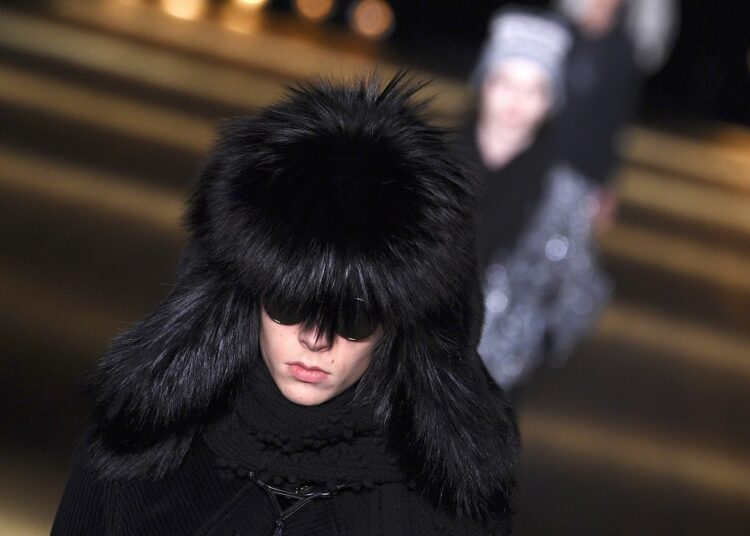PARIS — French high-end fashion brand Saint Laurent will stop using fur in its collections from next year, its parent company Kering said yesterday, joining a growing list of global companies.
Kering brand Brioni will also forsake fur, the company said, making all the fashion group’s houses fur-free.
Animal rights groups have long lobbied the global fashion industry to give up fur and several, including Versace, Chanel and Michael Kors, had already stopped using it.
People for the Ethical Treatment of Animals (PETA) took the lead in protesting against Saint Laurent, demonstrating outside its store in the fashionable Avenue Montaigne in Paris this year after supermodel Kate Moss appeared in an advertising campaign for the brand wearing a fox coat.
“There is nothing glamorous about fur,” PETA told Saint Laurent.
Within the Kering group, Gucci was the first to drop fur in 2017, followed by Balenciaga, Bottega Veneta et Alexander McQueen.
“The world has changed, along with our clients, and luxury naturally needs to adapt to that,” Kering CEO François-Henri Pinault said in a statement.
Kering would be entirely fur-free from the Fall 2022 collections.
Yesterday, among the fur items still available in Saint Laurent’s webstore were a rabbit coat priced at 5,500 euros (US$6,450), a sleeveless fox vest for the same price, and a pair of mink mules for 995 euros.
“We believe that killing animals not to eat them but only for their fur doesn’t correspond to modern luxury which must be ethical, in sync with its times and the questions of our societies,” Marie-Claire Daveu, head of sustainable development at Kering, told AFP.
LVMH, the world’s largest luxury group and Kering rival, meanwhile told AFP that it continued to allow its brands to meet customer demand for fur products.
These were being made “in the most ethical and responsible way possible”, LVMH said, adding that it had banned all fur from endangered species.
According to PETA, 85 per cent of fur sold in the world originates from animals who live their entire lives in captivity, often in conditions “of misery” and “extreme suffering”.
They are usually killed by poison gas, electrocution or beaten to death with clubs, it said.
The international fur trade is estimated to be worth several tens of billions of dollars annually, employing around one million people worldwide.






Discussion about this post